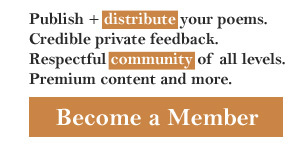This is an analysis of the poem If The Foolish, Call Them "Flowers" that begins with:
168
If the foolish, call them "flowers"—... full text
Elements of the verse: questions and answers
The information we provided is prepared by means of a special computer program. Use the criteria sheet to understand greatest poems or improve your poetry analysis essay.
- Rhyme scheme: X XaXa XbXb XXXX Xbbb XXXX
- Stanza lengths (in strings): 1,4,4,4,4,4,
- Closest metre: trochaic tetrameter
- Сlosest rhyme: no rhyme
- Сlosest stanza type: sonnet
- Guessed form: unknown form
- Metre: 1 00101010000 10101 0010100000 00111 1110100000 11101 111011000 01001 11101110000 1000100 11101011 1010100 10111101 10100 1011110 00101 10111110 11111 101011000 1111010
- Amount of stanzas: 6
- Average number of symbols per stanza: 107
- Average number of words per stanza: 15
- Amount of lines: 21
- Average number of symbols per line: 30 (strings are less long than medium ones)
- Average number of words per line: 4
Mood of the speaker:
There are many exclamation marks in the poem. The speaker is excited. He or she has strong feelings on the subject that is described in the poem.
If you write a school or university poetry essay, you should Include in your explanation of the poem:
- summary of If The Foolish, Call Them "Flowers";
- central theme;
- idea of the verse;
- history of its creation;
- critical appreciation.
Good luck in your poetry interpretation practice!
Pay attention: the program cannot take into account all the numerous nuances of poetic technique while analyzing. We make no warranties of any kind, express or implied, about the completeness, accuracy, reliability and suitability with respect to the information.
More information about poems by Emily Dickinson
- Analysis of I Learned—at Least—what Home Could Be
- Analysis of How The Waters Closed Above Him
- Analysis of Robbed By Death—but That Was Easy

